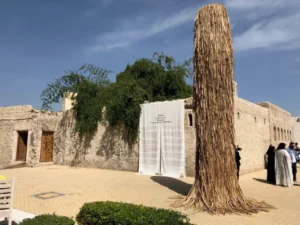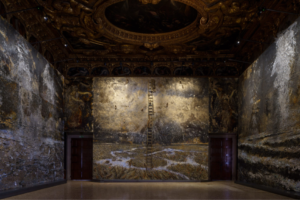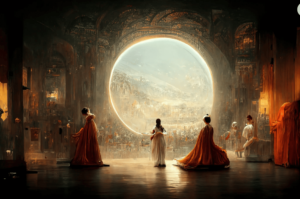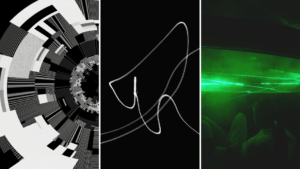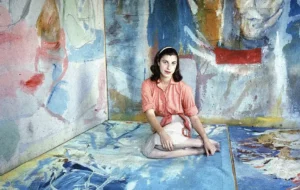“With just one polka dot, nothing can be achieved. In the universe, there is the sun, the moon, the earth, and hundreds of millions of stars. All of us live in the unfathomable mystery and infinitude of the universe.”
By allowing audiences to lose themselves in the endless repetition of polka dots and mirrors, Japanese artist Yayoi Kusama is crafting a legacy filled with imagination and boundless possibilities.
The art world has traditionally been male-dominated, with female artists throughout history facing systemic barriers that have limited their visibility and recognition. But 95-year-old Kusama proves there is power in creativity and resilience, challenging the status quo. Not only is Kusama now the only woman on the list of most frequently searched artists according to the Artnet Intelligence Report Year Ahead 2024, but she also ranks proudly in third place – joining the likes of Pablo Picasso and Andy Warhol. Picasso, Warhol, and other renowned artists have remained consistently on the prestigious list since 2005. So what makes Kusama even more remarkable is the fact that just 18 years ago, she wasn’t in the rankings at all. Today, Kusama is not only a powerful symbol of empowerment for women in the arts but also proof that the art market’s appetite for contemporary art is intensifying.
From Hallucinations to Artistic Vision
Born on March 22, 1929, in picturesque Matsumoto, Nagano Prefecture, Japan, Kusama was born to a relatively wealthy family. But despite the physical tranquility of her surroundings, her formative years were marred by a philandering father and a mother who would instruct the young Kusama to spy on him with his mistresses. And when she would report back, her mother would take her rage out on Kusama.
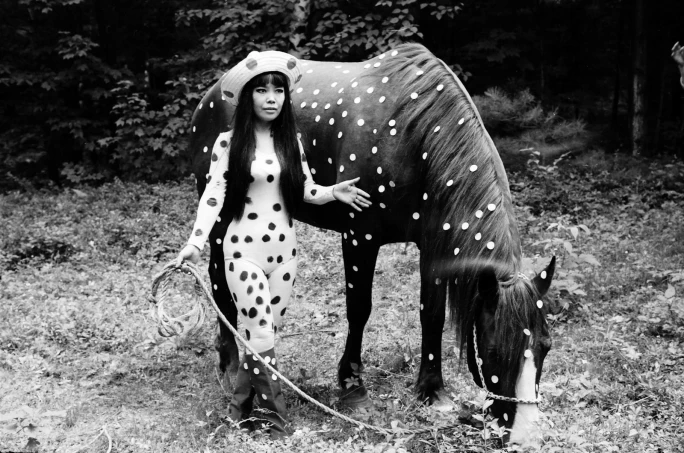
Kusama would struggle with mental health issues and began experiencing vivid hallucinations, which often manifested as patterns of dots or nets. When speaking of her youth, Kusama would recall experiences of flowers and pumpkins talking to her. But while these hallucinations would torment Kusama, they would, ultimately, inspire her. And by age 11, she won her first art prize when she painted the same pumpkin that she claimed began speaking to her when she first picked it up.
Art would become a form of self-expression and consequently, a means to cope with inner turmoil. In her early years, Kusama experimented with various styles and techniques, often exploring themes of nature and fantasy. Seeking refuge in her art as a form of self-therapy and driven to seek expression beyond the confines of her provincial upbringing, Kusama moved to Kyoto in 1948 where she would study traditional Japanese painting at Kyoto University of Arts. However, the constraints of the conservative artistic environment in Japan at the time would push Kusama to pursue opportunities abroad.
In the late 1950s, Kusama moved to New York to immerse her creative spirit in the city’s vibrant art scene. It was during this era in her artistic journey that she would begin experimenting with avant-garde styles and mediums, including performance art, sculpture, and installation art. Kusama’s provocative and innovative approach to art earned her acclaim in the art community, and by the early 1960s, Kusama and her works characterized by bold colors and repetitive motifs had established her as a pioneering figure in the avant-garde art world.
Kusama’s bold aesthetic and unconventional techniques in the forms of immersive installations and polka-dot patterns also resonated with the Pop art movement. Her exploration of spatial arrangements, clean lines, and geometric shapes also aligned with the principles of Minimalism. Because of Kusama’s ability to embrace elements of various art movements, her art transcended traditional artistic categorization and carved a distinct path in the contemporary art world.
Kusama’s haunting encounters with hallucinations, particularly those featuring polka dots, laid the groundwork for her artistic explorations – allowing her to not submerge as a victim of her inner turmoil but rather surface as a visionary.
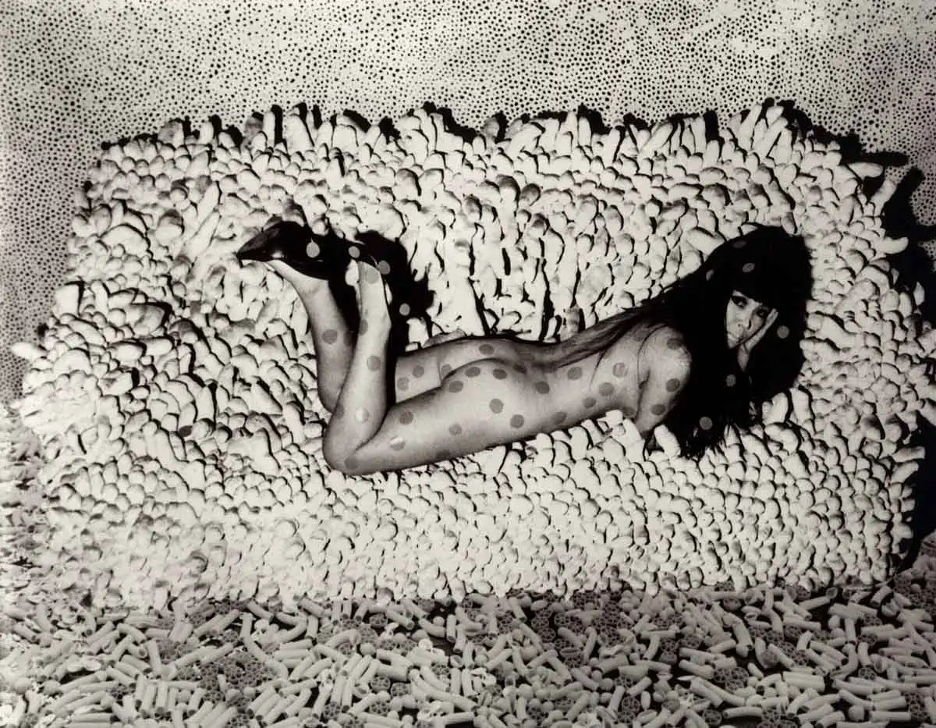
On Contemplating the Complexity of the Human Experience
Kusama’s art reminds us of the transformative power of imagination. What has set Kusama apart goes beyond her technical prowess or aesthetic sensibility; it’s her profound ability to infuse her creations with emotions that resonate with the viewer deeply.
Since the 1950s, Kusama has explored themes of infinity and interconnectedness of the universe, leveraging the repetitive polka dot pattern in many of her paintings, sculptures, and installations. Her Soft Sculptures series blurred the boundaries of sculpture and performance art. Often featuring phallic shapes covered in fabric and stuffed with soft materials, these whimsical forms challenged the traditional notions of sculpture. Also in the 1950s, Kusama began her series of Net Paintings. The Infinity Net paintings consist of large canvases covered with intricate interlocking lines and shapes. The abstract compositions were reflections of Kusama’s exploration of obsessive themes and the infinite cosmos.
In 1965, Kusama’s audience was first introduced to her Infinity Mirror Rooms series, immersive installations that feature mirrored walls and ceilings adorned with lights, sculptures, or polka-dotted forms. The repetition of reflections created the illusion of infinite space, igniting a sense of fascinating boundlessness.
Kusama has also staged many provocative performance pieces since the 1960s with performance art that often involved nudity, body paint, and even audience participation. Through performances that pulsated with energy, Kusama not only challenged societal conventions but also highlighted thought-provoking themes of mental health, identity, and the human condition.
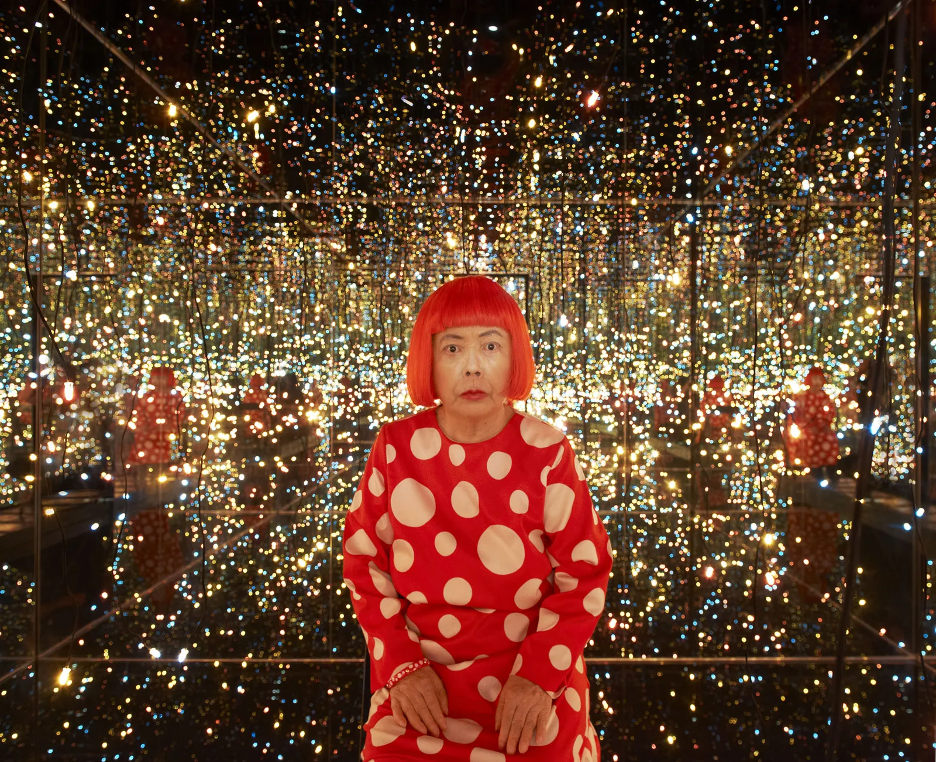
Eternal Echoes of Yayoi Kusama’s Infinite Legacy
Kusama, who has voluntarily lived in a psychiatric hospital for almost 50 years, continues to captivate audiences. From the tranquility of Japan’s climate to the pulsating New York City art scene, Yayoi Kusama has carved a legacy that has spanned decades.
In this digital age, her art has found a new audience through social media, with millions of museum visitors queuing for the opportunity to include the highly Instagrammable Yayoi Kusama experience in their feeds. But while she is extensively celebrated for her immersive “Infinity Rooms” and polka-dotted artworks, Kusama holds a much deeper legacy – one that tells a narrative of activism, political critique, and the human condition. Her anti-war sentiments unfolded in performances and public interventions. From her guerilla exhibition at the Venice Biennale in 1966 to her protest performances against the Vietnam War, Kusama has boldly used her art as a platform to reflect the turmoil of society.
Kusama’s installation Obliteration Room, which is a little over 20 years old, is playful and whimsical thanks to the juxtaposition of vibrant colors against a white background. However, the act of covering the room in dots symbolizes the intrusion of serenity and the inevitability of change – with each dot acting in defiance against the once pristine white canvas to confront the fragility of existence. The installation invites viewers to contemplate the contradiction between creation and destruction, engaging us to examine the existence and intersection of order and chaos in our lives.
“I wanted to start a revolution, using art to build the sort of society I myself envisioned.”
Through mesmerizing works, characterized by intricate patterns and repetitive brushstrokes, audiences transcend the boundaries of the tangible world. By urging participants to actively engage with her artwork, Kusama demonstrates the power of collective action. Kusama has taken her personal struggles to create mesmerizing patterns and immersive experiences to not only emerge as a symbol of female-empowerment but also a testament to the resilience of the human spirit.

![[Left] Kusama with her piece Dots Obsession, 2012, via AWARE, [Right] Yayoi Kusama (Courtesy Whitney Museum of American Art) | Source: thecollector.com](https://www.artdex.com/wp-content/uploads/2024/04/Left-Kusama-with-her-piece-Dots-Obsession-2012-via-AWARE-Right-Yayoi-Kusama-Courtesy-Whitney-Museum-of-American-Art-Source-thecollector.com--768x441.png)

